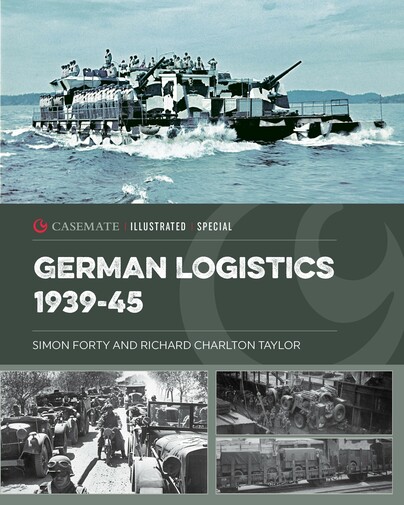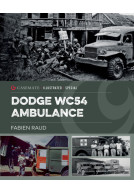Google Books previews are unavailable because you have chosen to turn off third party cookies for enhanced content. Visit our cookies page to review your cookie settings.
German Logistics 1939-45 (Hardback)
Imprint: Casemate Publishers
Series: Casemate Illustrated Special
Pages: 192
Illustrations: 250
ISBN: 9781636245188
Published: 1st August 2025
Series: Casemate Illustrated Special
Pages: 192
Illustrations: 250
ISBN: 9781636245188
Published: 1st August 2025
You'll be £27.96 closer to your next £10.00 credit when you purchase German Logistics 1939-45. What's this?
+£4.99 UK Delivery or free UK delivery if order is over £40
(click here for international delivery rates)
Order within the next 4 hours, 8 minutes to get your order processed the next working day!
Need a currency converter? Check XE.com for live rates
(click here for international delivery rates)
Order within the next 4 hours, 8 minutes to get your order processed the next working day!
Need a currency converter? Check XE.com for live rates
When we think of the German Army we think of the Blitzkrieg years, 1939–41, during which Panzers pushed deep into enemy territory and forced huge encirclement battles that annihilated the enemy’s strength in Poland, France, the Balkans and the Soviet Union. With their Auftragstaktik and cutting-edge weaponry, they epitomised incisive modern war.
However, there was an elephant in the room, and in spite of their superb battlefield leadership, their brilliant victories, their technical prowess, their mighty Tigers and Panthers, they lost because of it.
It wasn’t, as the German generals argued postwar, the Soviet hordes that swamped them. It wasn’t the industrial capabilities of the United States. It wasn’t the control exerted by a dictator increasingly removed from the real world. It wasn’t the amount of effort spent transporting millions of people to their deaths in the camps, or the amount of concrete poured into the Atlantic Wall from the Arctic to the Mediterranean.
All these points helped swing the war in the Allies’ favour but they weren’t the main reason why the German Wehrmacht lost. The elephant in the room was logistics.
It’s easy to point out how well the Germans achieved their Blitzkrieg successes, but the war didn’t end in 1941. It’s easy to talk about the positives of German logistics—the fact that they could advance so far into the Soviet Union over such difficult terrain until the weather and poor roads conspired against them; the way that German industry kept going in spite of Allied strategic bombing; the resilience and resourcefulness of the way they kept the railways running, allowing huge numbers of men and armoured vehicles to shuttle from east to west as they were needed.
In the end, at the critical moments in the war, their logistics failed them
Customers who bought this title also bought...
Other titles in the series...
Other titles in Casemate Publishers...






















